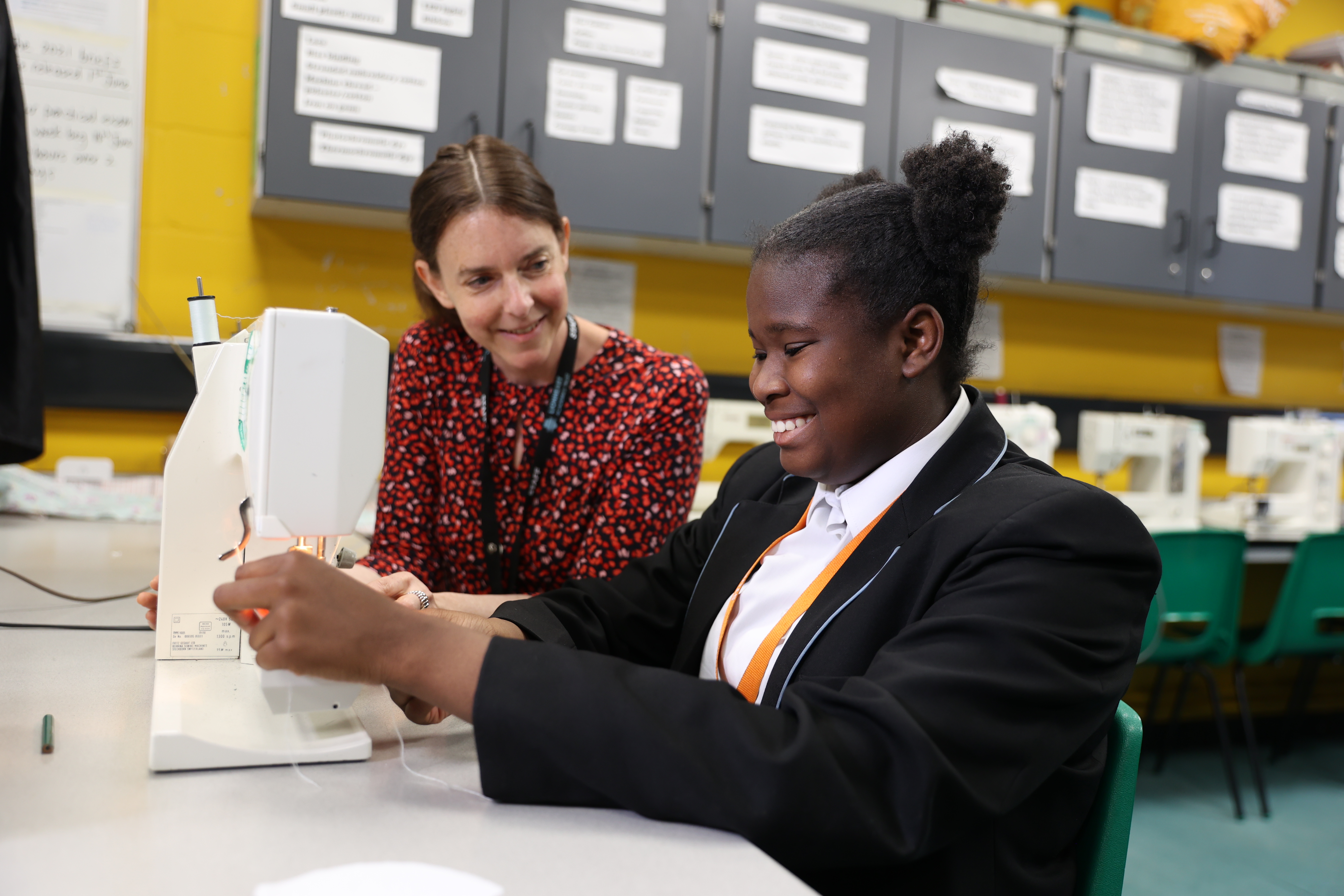
Fashion and Textiles
DESIGN AND TECHNOLOGY - FASHION AND TEXTILES (GCSE)
This course of study will enable students to develop and use a wide range of practical skills with fabrics and explore creative design approaches. Students will also be prepared to participate confidently and successfully in an increasingly technological world. They will gain awareness and learn from wider influences on design and technology including historical, social, cultural, environmental and economic factors. These concepts are applied to practical fashion and textile product design development. Students will learn a broad understanding of design and technology materials and principles and develop a focussed coursework project using fashion and textiles skills.
EXAMINATION BOARD EDUCAS
SPECIFICATION CODE C600U10-1
CURRICULUM CONTENT
Core knowledge and understanding includes a wide range of theory:
- Design and technology in our world: industry, enterprise, sustainability, people, culture, society, manufacturing systems.
- Smart, modern and technical materials including smart fibres and fabrics, biomimicry, interactive textiles and wearable electronics.
- Electronic systems, woods, metals, plastics, papers and boards and their use in product design.
- Textile materials and their working properties. We also learn about fabric production and manufacturing at all stages of product development in the fashion industry.
- Dressmaking and tailoring techniques used in different production systems. This includes construction and shaping methods, the use of CAD CAM and learn how designers achieve a professional quality of finish in commercial product design.
Folder: This includes project research, design, development, making, testing and evaluating. Students learn about analysis of design context and development of a project brief, analysis of client and user needs and design specification requirements. Students learn about environmental, social and economic issues, they develop and test practical ideas, investigate the work of professional designers, develop fashion illustration and graphic communication techniques and apply knowledge of textile theory to their own designs.
Prototype: Students make a final product. They will learn to select appropriate materials, to use patterns/templates/stencils, to join fabrics accurately, to shape and manipulate fabrics, to apply decoration or appropriate finishing techniques and to work safely.
ASSESSMENT
Component 1: Design and Technology in the 21st Century.
- Students will sit a 2 hour written exam at the end of Year 11. This is worth 50% of the qualification.
Component 2: Designing and making principles
- Students will produce a Design and Make project (concise folder, models and fabric prototype) in approximately 35 hours. This is worth 50% of the qualification. Students select 1 out of a possible 3 contextual challenges on June 1st in Year 10.
EXTRA-CURRICULAR OPPORTUNITIES: Students can take part in a visit to see undergraduate Fashion and Textiles work to see where their studies could take them in the future. Students will be able to use the Design and Technology workshops to develop their creative work outside of school hours to use specialist equipment and machinery.
PROGRESSION:
This GCSE course has a healthy balance of creative and practical skill development, which is underpinned with an in-depth knowledge and understanding of Fashion and Product design principles in the 21st Century. Future career and education pathways could include: fashion design, engineering/STEM careers, product design, art textiles, fashion buying, illustration, fabric technologist, fashion retail and marketing.

